Are you Applying the Business Lifecycle for Fun and Profit? In Blackboard Fridays Episode 83, Jacob talks about the Business Lifecycle. Need this implemented into your business? Talk to the international business advisor who can do exactly that – Contact Jacob, Learn More, or Subscribe for Updates.
You know, I don’t only film myself in front a Blackboard every Friday because I’m gorgeous. I actually do this because I want YOU to take away something specific, every week, and APPLY that into your business.
So when I ask “Are you Applying the Business Lifecycle for Fun and Profit?” I don’t mean “Do you understand this framework intellectually?” Because I know you do, you’re smart. What I want to know is “Are you using this specific framework to help you make better decisions every day?”
Not sure how it can help you in practice? Then you’re going to love this week’s episode, which you can watch here. Knowing where you are on your journey, a journey defined by your feelings in relationship with your business, can help you apply:
- Your investment of time across all Roles and Responsibilities
- Your focus in implementing a Formula for Better Revenue
- Which of your Thinking, Feeling, or Knowing you need to be listening to right now
- Whether your Commercial, Cultural, or Personal Vision is paramount, and
- Maybe even whether right now you need to Be Better or Be Bigger
(Side note, if you want more details on exactly where your business is in its Lifecycle, enjoy watching Episodes 1 and 2 here. And if you want to learn more about the emotional rollercoaster and strategic priorities at each stage, click the links to learn about Start-Up, Scale- Up, Step-Up, and Sell-Up.)
Who is Jacob Aldridge, Business Coach?
“The smart and quirky advisor who gets sh!t done in business.”
Since April 2006, I’ve been an international business advisor providing bespoke solutions for privately-owned businesses with 12-96 employees.
At this stage you have proven your business model, but you’re struggling to turn aspirations into day-to-day reality. You are still responsible for all 28 areas of your business, but you don’t have the time or budget to hire 28 different experts.
You need 1 person you can trust who can show you how everything in your business is connected, and which areas to prioritise first.
That’s me.
Learn more here. Or Let’s chat.
Blackboard Fridays Episode #83 – Are you Applying the Business Lifecycle for Fun and Profit?
G’day, Blackboarders! You’re probably familiar with the business lifecycle diagram below. It’s such a critical part of understanding your business, the decisions you make, and how to improve your business, that it’s one that we’ve covered in no less than six different Blackboard Fridays episodes.
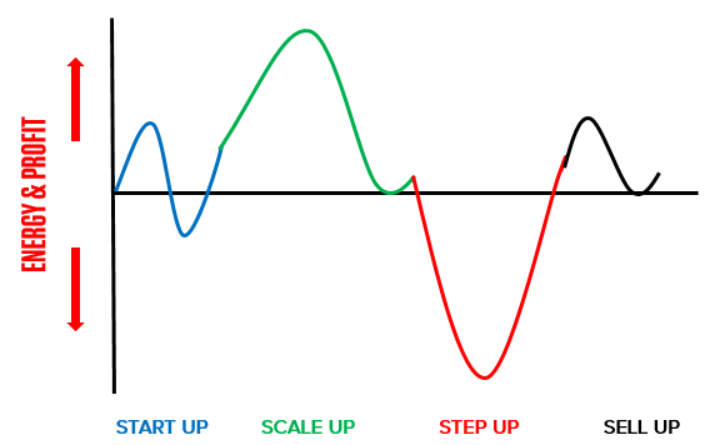
We covered it way back in episode 1, and more than 80 episodes later, we’re still talking about this. Why? Because there is a lot of depth to this ‘simple’ business framework – and if you’re not aware of all the connections, you might not be fully profiting from your understanding.
Like a lot of my clients over the years, if I ask you a direct question about how you’re applying this strategic framework and how you’re using this in your business week to week, you’re probably going to appreciate that while you understand it intellectually … you haven’t yet understood how to fully implement the Business Lifecyle to continually improve your business decisions, make your life fun, and your business more profitable.

So, today we’re going to talk about five different strategic overlaps.
Depending on where you are in the business lifecycle, you’ve got an opportunity to make faster decisions by knowing how these different elements integrate.
You’ll remember that the emotional roller coaster of business goes through speed bumps, hurdles, and brick walls.
How you’re feeling as a business owner will impact the decisions you make, and how well you lead your team. Here’s some of the key conversations that will help you with that communication, and decision making.
1. Your Investment of Time Across All Roles and Responsibilities
The first relates to our R’n’R framework. Now, this we covered in episodes 7, 8 and 9.
- We talked about where you as a business leader are investing your time,
- and where you are investing the time of the team that you’re building, the most valuable resource that you’ve got.
- We broke that time into four separate areas and you might recognize the colours.
- We talked about how we colour code our diaries, our agendas, and our position descriptions, Blue, Green, Red, and Black, depending on whether we’re talking about Revenue, Growth, Administration, or Wealth.

Those four colours overlap on the business lifecycle – but did you know that’s why we use them?

We’ll be doing a little bit of all of these at every point in time – but your focus as a leader will need to evolve.
In Start Up, you need to focus more on Revenue – so we coloured Start Up ‘Blue’ to remind you how Revenue makes the difference between the 50% of businesses that survive the first three years, and the 50% that do not.
In Scale Up, you need to shift into having a Growth focus for your time, and get other people to help deliver the revenue. So we coloured that Green for Growth.
In Step Up, you need to shift your focus back to Administration, improving the systems and resources you’ve got, ratcheting up the efficiency to getting the profit and the energy back up.
In the Sell Up or Succeed Up phase, whether you’re going to sell or just leverage up, you need to shift your focus to Wealth, and really building that portfolio business that you desire.
So as you can see, when you understand the Business Lifecycle you can see how it prompts a key application around investing (and changing the investment in) your time.
2. Your Focus in Implementing a Formula for Better Revenue
The second, and this goes back to episode 23, when we talk about formula for more revenue growth. And we talked about how, to generate more revenue, you just needed to focus on four different aspects:
- The activity that you were doing.
- The conversion rate, or percentage that you were achieving
- The value of your average client
- And then how well you were retaining them.
Again, you’re doing all of those things all the time. But there needs to be a focus.
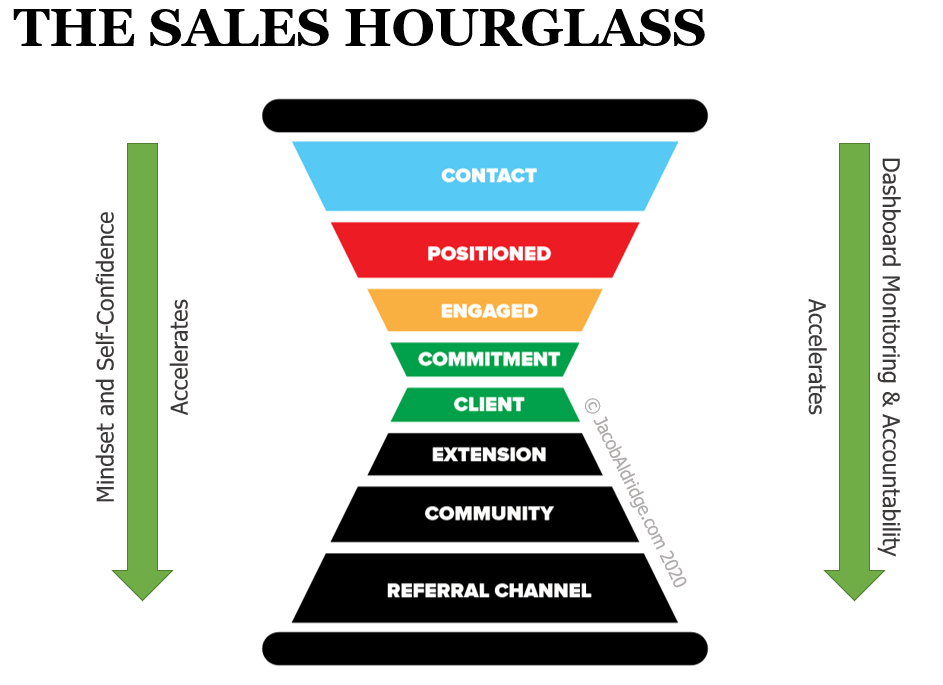
In Start Up, your focus needs to be on Conversion. You need to make sure that your product is going out to market and that people are actually buying it. If your conversion rate is horrible in the Start Up phase, that means your Product is horrible and you need to improve it.
In the growth phase, you shift. You’ve got conversion happening, you need to Scale Up the Activity, you need more coming in to the top of the sales hourglass.
In Step Up, the business is now ~15 years old. You need to shift focus to Value and making sure that your average client value increases. This is because it’s going to be harder to win more clients given the emotional state that your business is in at that point.
Lastly, in the Sell Up phase, you can shift a lot more of your focus towards Retention, product extension, customer service, making sure that you’ve got clients for the long-term because that adds an enormous amount of value to your business.
Again, you’re doing all of these, all of the time. But based on where you are in the lifecycle, there is a strategic focus for you and your revenue-generating sales team.
3. Which of your Commercial, Cultural, or Personal Vision is paramount?
The third one I want to talk about is Vision. We talked about this most recently in episode 78, and we talked about personal vision, commercial vision, and cultural vision.
In the Start Up phase, your personal vision is paramount. What are you, as a business leader doing to turn this business into something that supports your personal life?
As you shift from Start Up into Scale Up, your focus will shift away from personal, and you become much more invested in the business. You’re that confident that this is going to succeed. Most business owners at this point focus on their commercial vision (there are some for whom these are flipped, they focus on cultural first, but commercial vision is the most common).
At the peak of Scale Up, you hit that euphoria and you achieve your initial vision. This is where you need to reset, first and foremost, your personal vision, but also the commercial and cultural vision for you. You have achieved what it is that you wanted to achieve, and if you don’t reset the vision, then this glide down into Step Up is going to hurt a lot more.
The focus also flips if you were commercially focused initially, you’re now much more focused on the cultural vision, that’s what’s going to get you through there faster, and if you’re more of a cultural business initially, then the reverse is true. As you head into that final of the four phases of the business lifecycle, Sell Up, it becomes much more an ‘and’ strategy, commercial ‘and’ cultural ‘and’ personal.
All very much intertwined, but you as the business owner have got an understanding and the ability to ride those and to have those separate conversations.
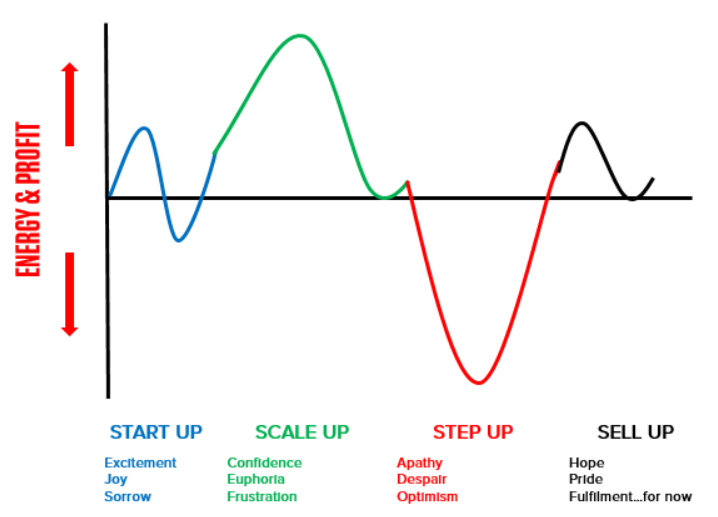
Two more applications that I want to go through.
4. Should You Listen to Your Thinking, Feeling, or Knowing?
The next application I want to talk about is which part of your body-psyche are you listening to? Now, this is something we compared in episode 54 Think, Feel, Know.
- We all make decisions in a Thinking state, a Feeling space, and from that Knowing ‘gut feel’
- So which of those do you need to be listening to? That again depends on the business lifecycle.
At the very beginning, in Start Up, you need to listen to your Knowing. You need to trust your gut feel and your intuition – it’s not always right, but it’s the best guide that you will have, and it will get you through that initial phase.
You’ll always be listening to all three of these. You may have a preference for being Knower, for listening to that gut feel, but at any of these points in the journey where the business goes on a down dip, that’s when you need to listen to your Thinking, your data and your analysis.
Maybe that means listening to your team members, or your providers, your CFO, your accountant, who are maybe more thinking inclined in giving you recommendations.
That will help you through the down energy periods. And when you’re going through the up energy periods, and there’s several of those throughout the journey, that’s when you need to listen to your Feelings a little bit more. Don’t get caught up in all of the data. Actually trust the pictures, the stories, the emotions that are driving your business because they’re driving your business well.

5. Is it Time to be Bigger or Better?
The final application that I always get asked about links back to the Capacity Planning that we covered in episode 4, and then in more detail in episodes 34 through 36. That’s the capacity engine, and that simple question, at any point in time, do I need to be better or do I need to be bigger?
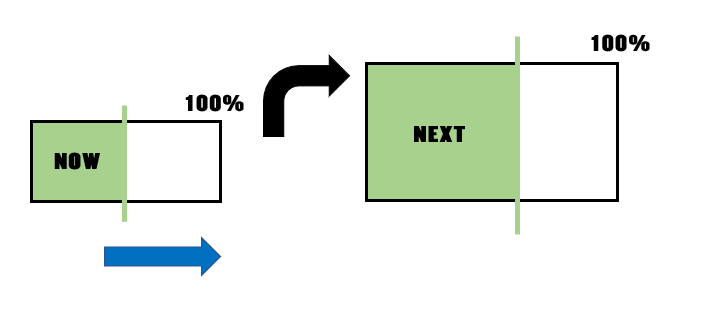
People say, well, depending on where I am in the business lifecycle, does that tell me whether I need to be better or need to be bigger? No.
This strategic framework does not overlap neatly on your business lifecycle … but I will add a caveat though.
One of the things that I find in a lot of businesses particularly when the energy’s going down and the profit is going down, is that they think, feel, or know that they need to be better, that the focus is on improving the efficiency of their team to generate more revenue.
You need to do your capacity engine calculations at that point, it’s a thinking exercise, sit down there and listen to the thinking because often, it’s not about being better with your existing team, your business is the wrong size. The reason you’re not profitable, the reason you’re hurting is because your business needs to either be bigger or smaller than it’s current size.
In Conclusion
There’s a lot there for you to cover, and I’ve referenced an awful lot of other Blackboard Fridays episodes. You can see how important the business lifecycle strategic framework is.
Understanding where you are, the specific point emotionally along that journey will help you and your business is an enormous number of ways.
To be able to say “okay, at this point, if I’m there, I need to be listening to my feelings. I need to be talking about my commercial vision with the team, I need to be shifting my time and focus from revenue to growth, and I need to be looking at activity in the sales funnel. How’s that for simple!”.
Somewhere at a different point, you’ll have a completely different focus.
The key is this: if you can always remember to align your strategy with the business lifecycle, then you will have more fun and create more profit.
And ultimately that’s what we’re all looking for.
Next Steps
Want to learn more about how this can apply to your business? It costs nothing to chat:
- Email me jacob@jacobaldridge.com (I read them all)
- Call, Text, or WhatsApp me +61 427 151 181
- Or just Subscribe https://jacobaldridge.com/about/subscribe-to-jacob-aldridge-com/ to stay in touch

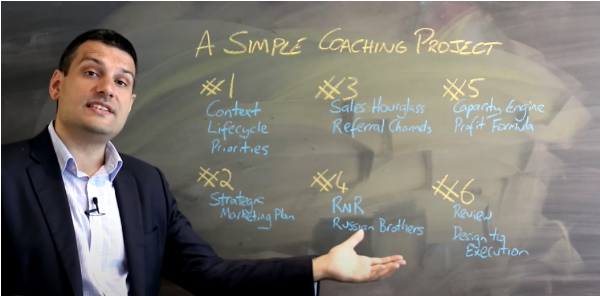
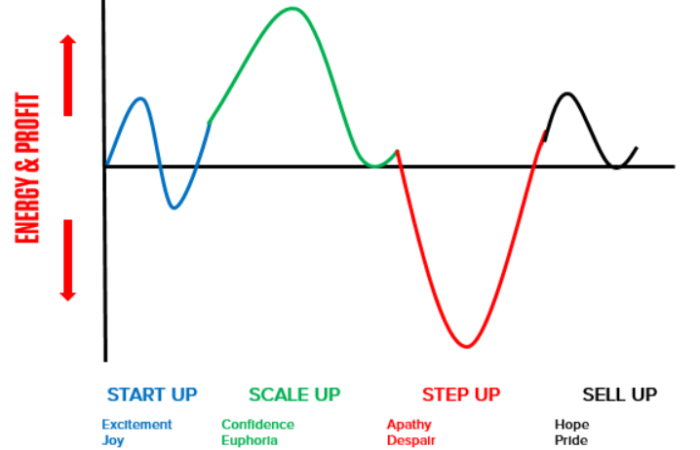
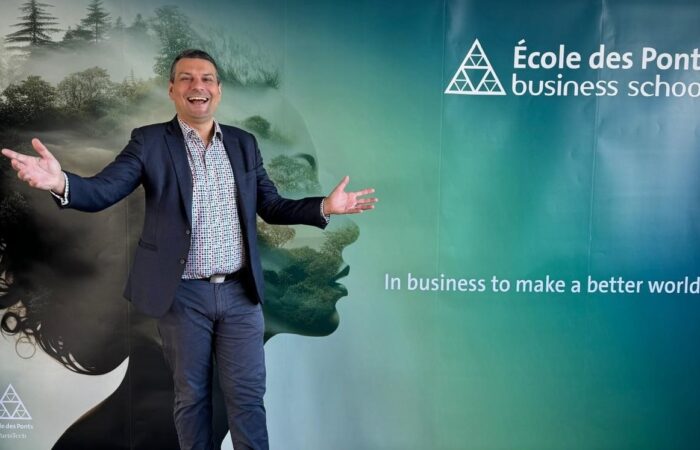

[…] Episode 83, Are your Applying the Business Lifecycle for Fun and Profit? – https://jacobaldridge.com/business/are-you-applying-the-business-lifecycle-for-fun-and-profit/ […]